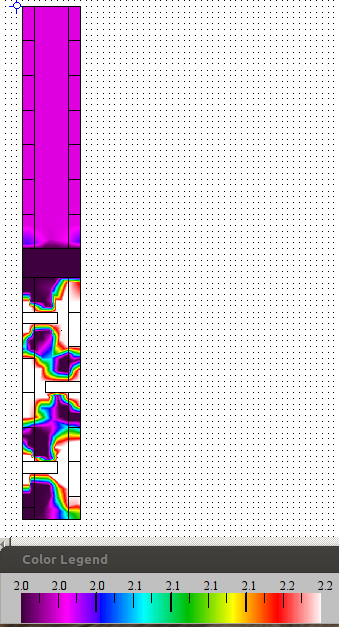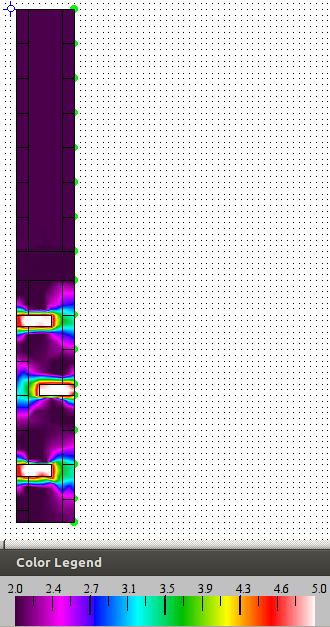Here are the design requirements I used when searching for a home and hot water heating system:
- cheap
- simple
- passable by building department (Indiana code follows IBC)
- low co2/pollutant emissions
- expandable to include, but not require solar collectors
- provide domestic hot water
- provide 100% of backup heat (when the sun isn’t shining) via radiant floors for 700 square foot, highly insulated passive solar house
Electricity
There are two primary ways to heat water with electricity. One is with a heating element which is how almost all residential hot water systems work, and the other is with a heat pump. Heat pumps can be 2 - 3 times more efficient, but are more complicated, expensive, and are most efficient when it is hot out - exactly when a solar hot water system would be better. Resistive heat is how most electric hot water heaters work. On this table, this kind of heat is both the most expensive and emits the most co2 out of all options. Though, this comparison doesn’t take into account that all other forms of heat require that you vent some of your warm conditioned air to the outside, see Natural Gas below. It also doesn’t take into account other issues such as local air quality (with wood), pollution and non-co2 environmental effects such as fraking and mercury rain. On the other hand, it is quite simple to set up a space or baseboard heater, and if you don’t need much heat from it, it may be easier to go with that than to put a bunch of thought into a more complex system. Instant electric water heaters are simple to integrate into a simple radiant floor system.
If you don’t actually want hot water all the time and you are only installing an automatic hot water system to meet code and don’t intend to use it, electric hot water has one of the lowest up front costs, at around $210 (installed) for an instant hot water heater and $250 (installed) for a smallish 40 gallon tank heater. For the tank heater you will need a 50A 240V breaker which is $10 and some 8-3 wire to your box (15’ is $30). An instant hot water tank will require a larger breaker and larger wire about $10 more expensive. Depending on the other appliances in your house, this could require a larger panel or service to your house, which could quickly add more cost.
Wood
Purchasing wood costs about the same as gas 2. Obviously, growing your own is also an option. I would be interested to see how much space and how many nutrients are required to grow enough wood to heat a home. I was hoping to be able to use a heat exchanger around the fire to provide hot water when the sun isn’t shining, but code requires that we have hot water available at all times, and so this is not an option. They also disallow all forms of DIY water heating … you must use only UL listed appliances. Even if code isn’t an issue, another down side is that we couldn’t use it to get hot water in the spring summer and fall without heating the house at the same time. In the summer, a fairly simple solar hot water collector should suffice for hot water, but it gets a little harder in the spring and fall.
Another down side to the wood stove, is up front cost. On craigslist I’ve found stoves for $300 or so, then at least another $400 for chimney, cap, roof connection, etc. In addition, cheap wood stoves on craigslist tend to be much larger than we need for our house, and very inefficient. We are building in a fairly high density area (30 adults / acre) and with everyone using this kind of heat, air quality would suffer very quickly. Stoves with a gasification step tend to have very low emissions and high efficiency. An efficient stove properly sized for our small house would be $800 instead of $300. Here are some small wood stove options:
Another option for wood is to build a rocket mass heater. (unless code requires UL listed appliances like it does here) These can be very efficient, low emissions and built by hand using materials that cost less than $100 total. They are quite large, so they should be taken into account when designing a space. It is cheap, but requires you heat your house if you want hot water, which isn’t always wanted. This kind of system could wind up being ideal if you have the time and space for one as well as the flexibility to try it out for a year in combination with a solar hot water system and try to balance them out so that your solar collectors heat the water in all of the times that you don’t want to start a fire inside. I look forward to experimenting with this type of system.
Solar
A good solar hot water system is either quite expensive - typically starting at $1000 or will require a bit more time researching DIY systems. I think that in the future, I would like to do this research or spend this money, but right now, I have other priorities. This is the reason for the design requirement above of a system which doesn’t require, but could easily be altered to take advantage of solar hot water. We are already incorporating passive solar heating ideas into our house, so heating with solar hot water doesn’t make much sense. The only time we will need extra heat is when the sun isn’t shining.
Propane
Propane is very similar to natural gas. It doesn’t require a gas line, which can be helpful. The fuel tends to be 40% more expensive than natural gas and emits 20-30% more CO2 1. One of the other disadvantages of propane is that it is a bit harder to find cheap large used propane water heaters around here.
Natural Gas
In a small house like ours, a typical hot water heater is about the right size to use for heating water for a radiant floor heat system. On a very cold day with no sun, our house will need about 130,000 BTU per day 3. A typical hot water heater is rated for 36,000 BTU per hour or 864,000 BTU per day, which is more than enough to heat our house on a very cold day. It may also be possible to use a very small instant hot water heater. One problem with a natural gas heater is that it requires fresh air to burn and so most furnaces and hot water heaters suck warm inside air past the flame and then vent it outside. Not only do you lose warm inside air, sucking air through the heater causes cold air to be pulled in through cracks near windows and doors, which are already colder than the rest of the house. The vents for a small house tend to be around the same size as the vents for a large one, and so the effect is proportionately greater. That said, some small gas space heaters can be ventless and cheap ($120), but there are too many horror stories for me, especially in a well sealed house. People complain about high carbon monoxide levels, lots of condensation which wind up on the windows and rotting the wood, health problems, etc. There are some gas heaters which are direct vent, which means they suck outside air to burn and then vent the exhaust, but they are more expensive ($400) and of unknown efficiency. This heater could be a good option if there is already a gas line to the house.
Conclusion
We are building two houses this year. In our house we will heat with electric instant hot water through a radiant floor and in the rental, we will use a wood stove. Both will likely use electric hot water tanks (for code, with DIY solar hot water and wood heat exchangers soon to follow).



